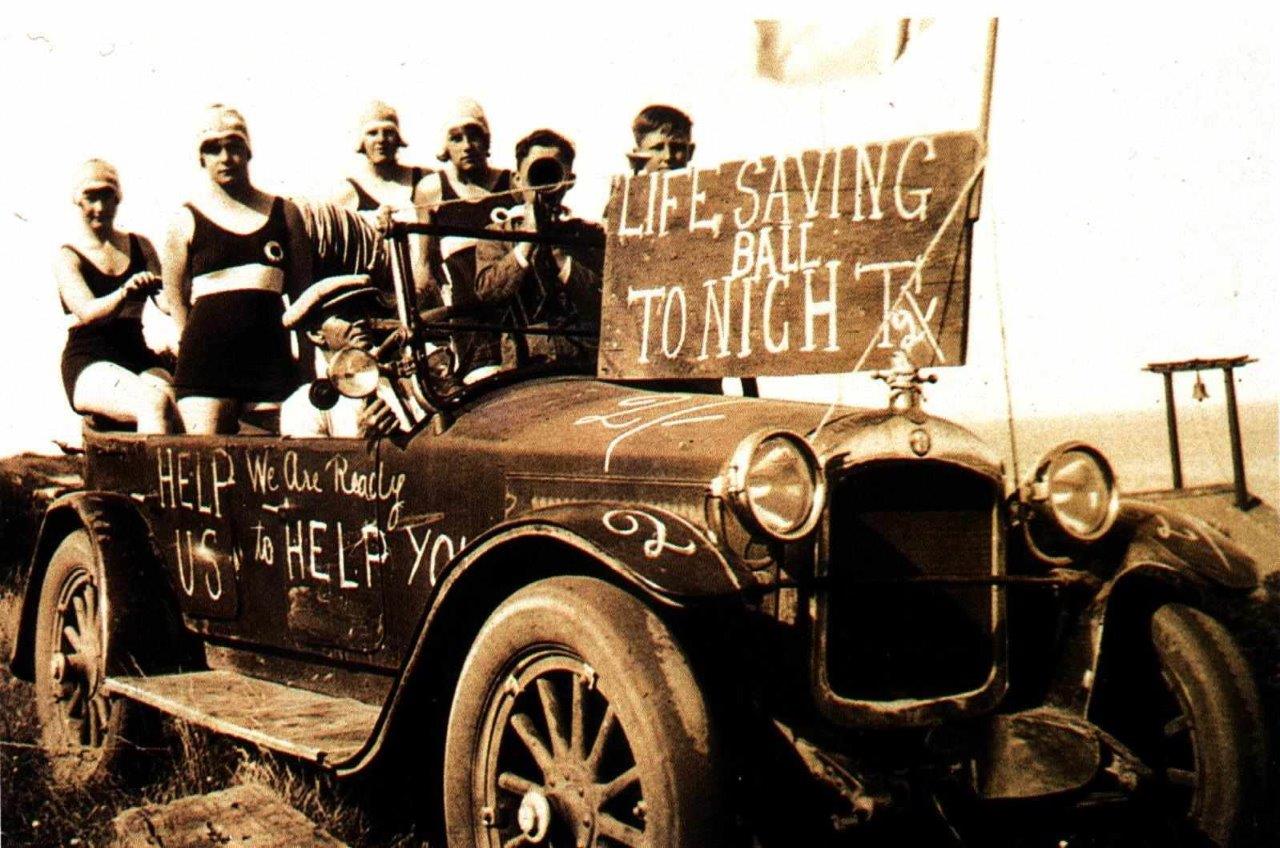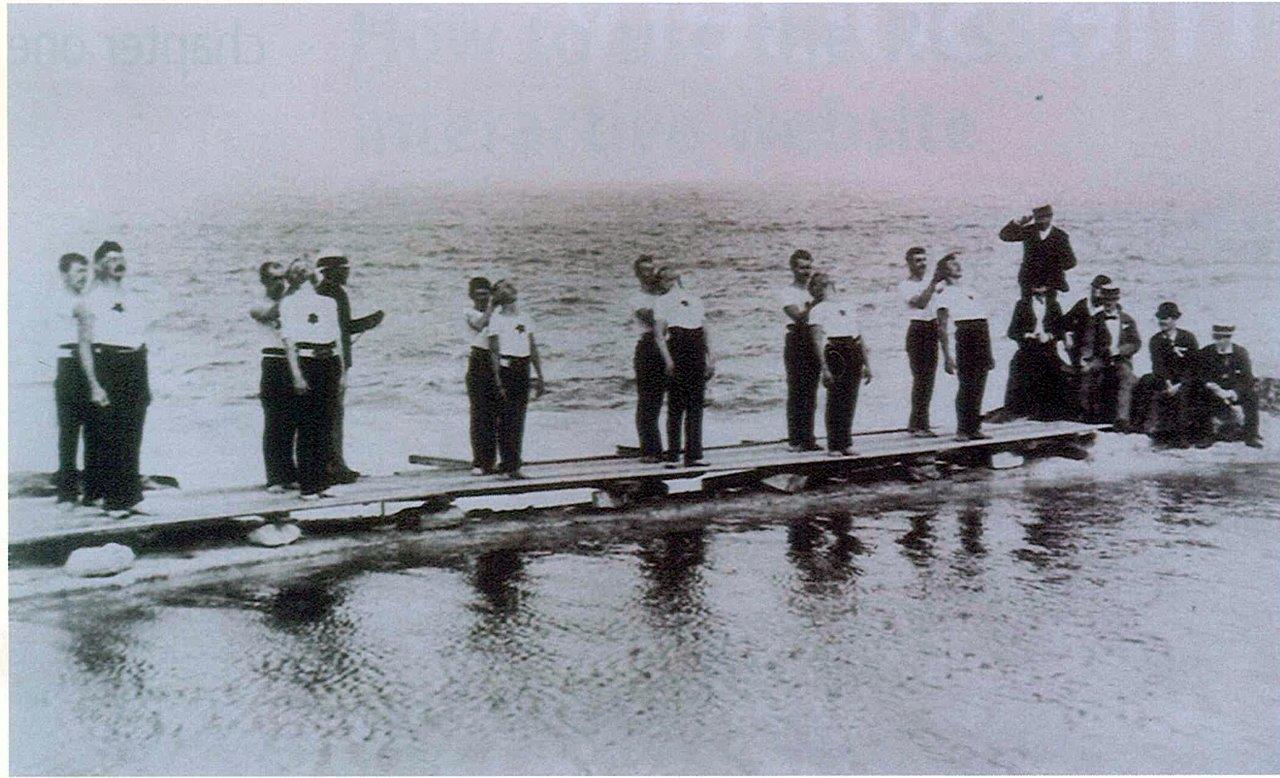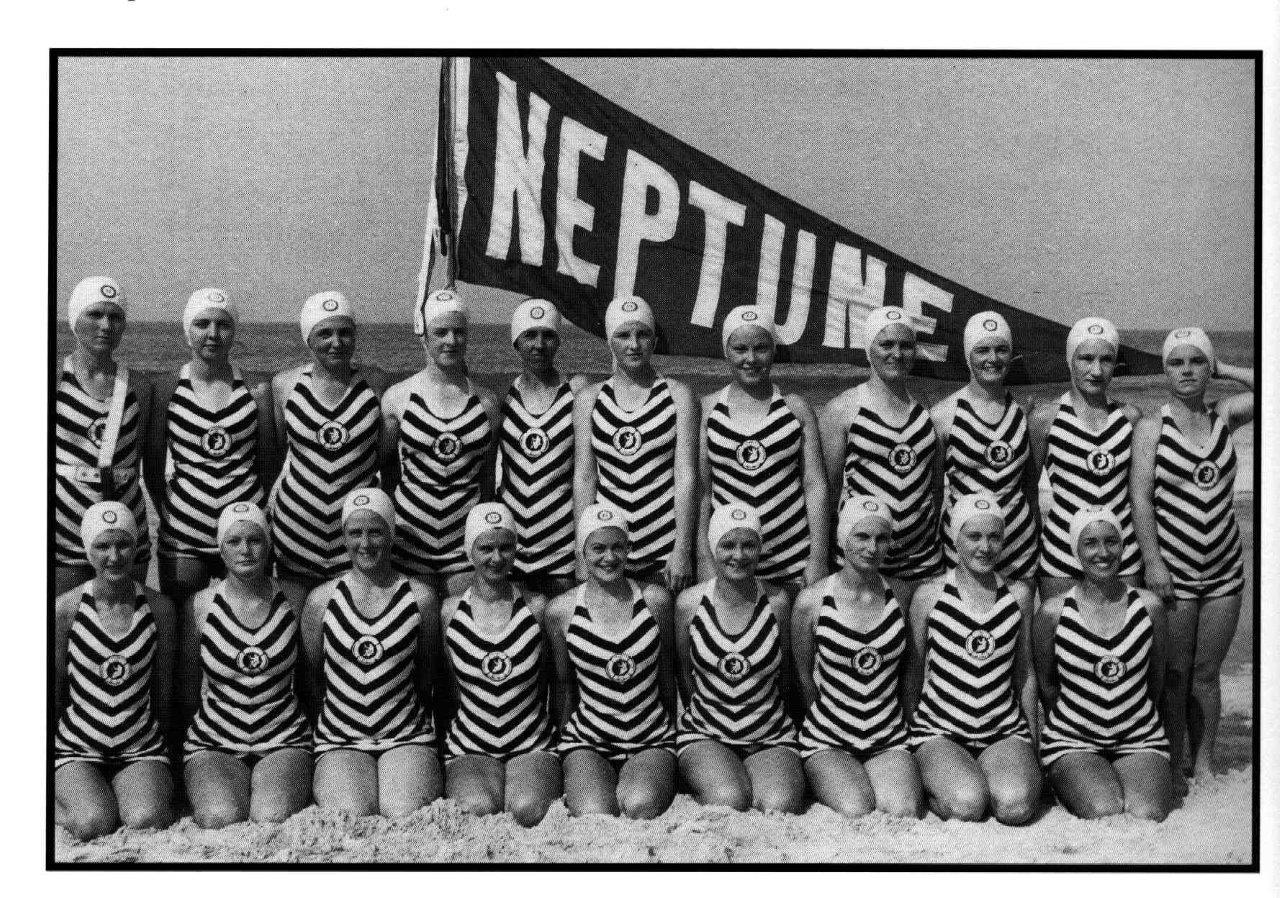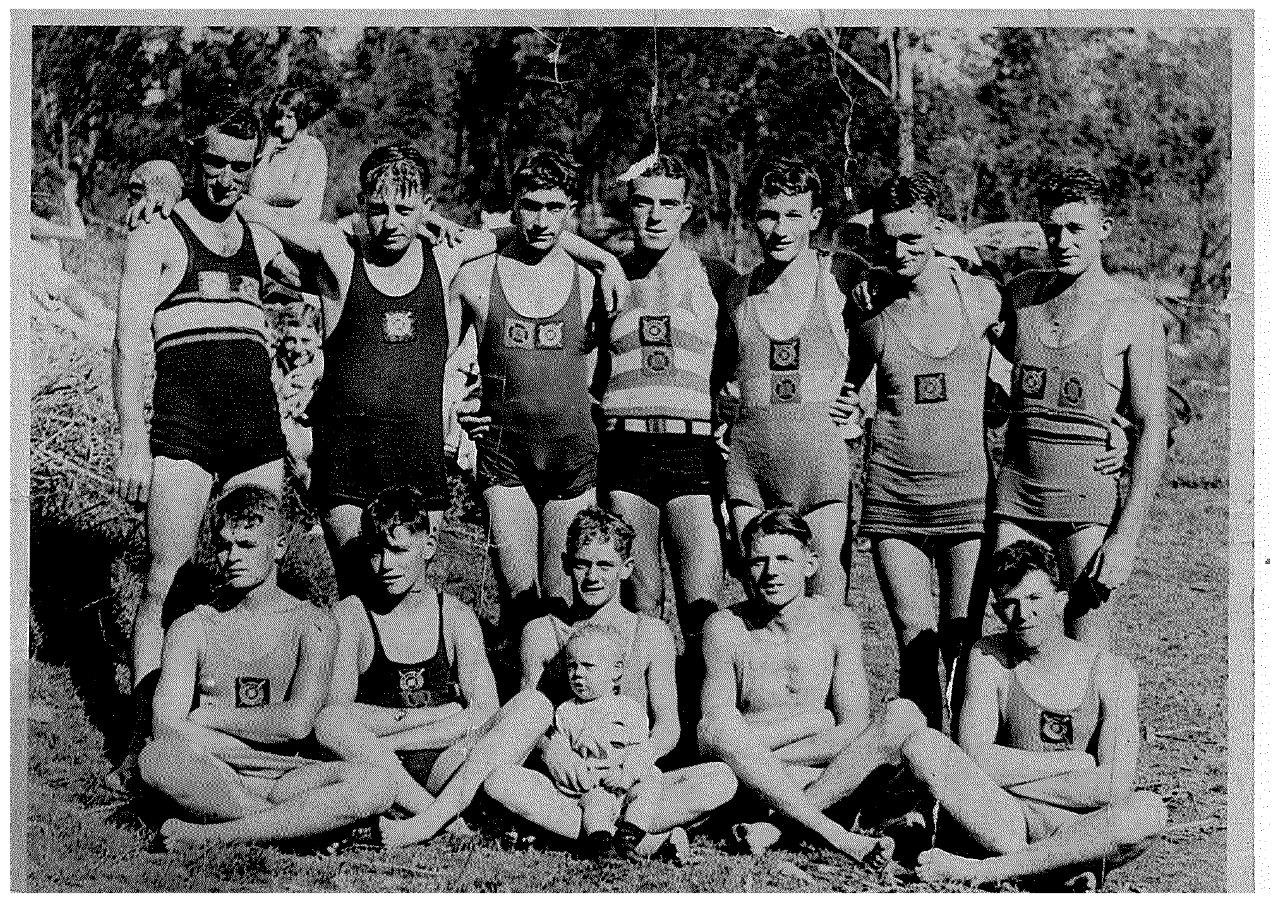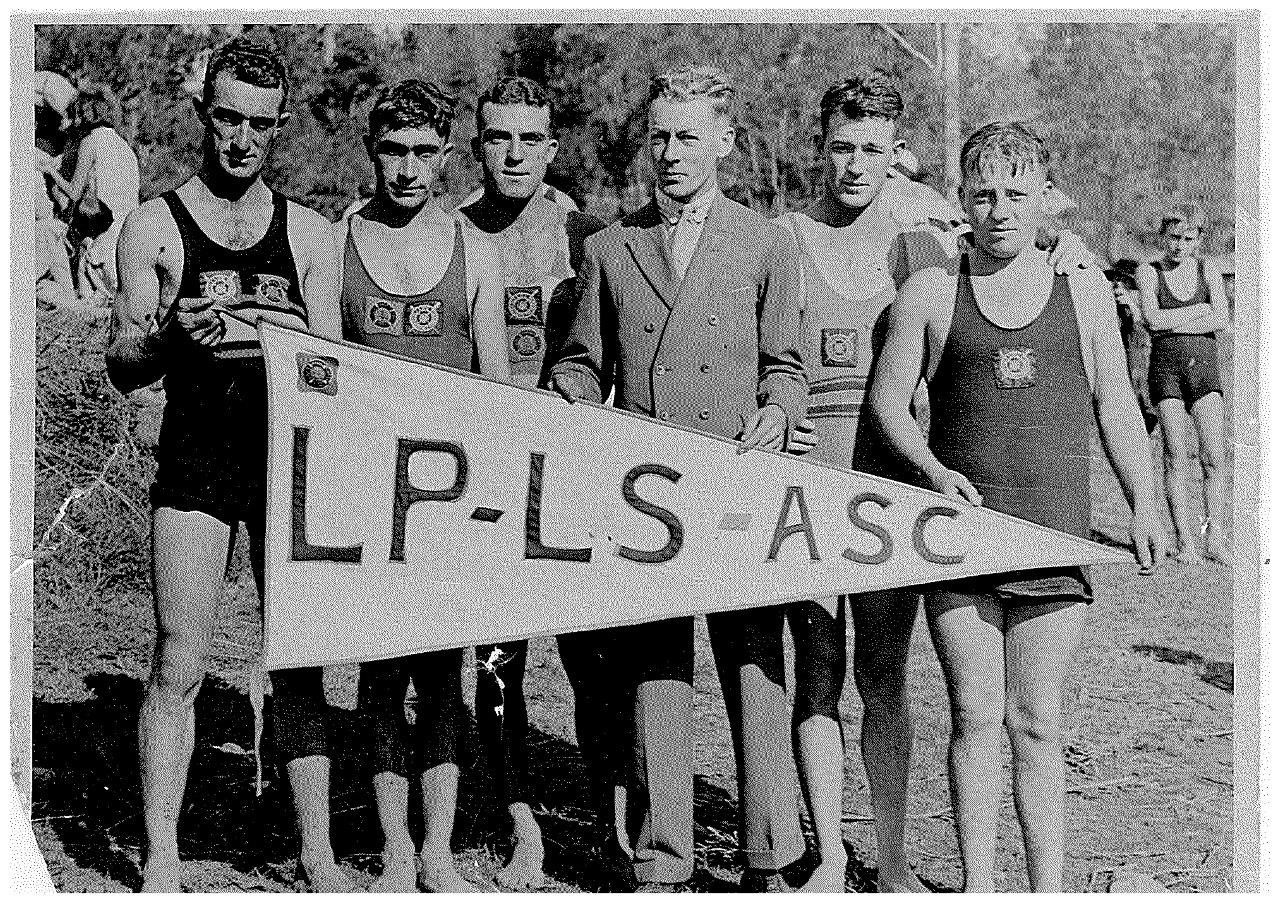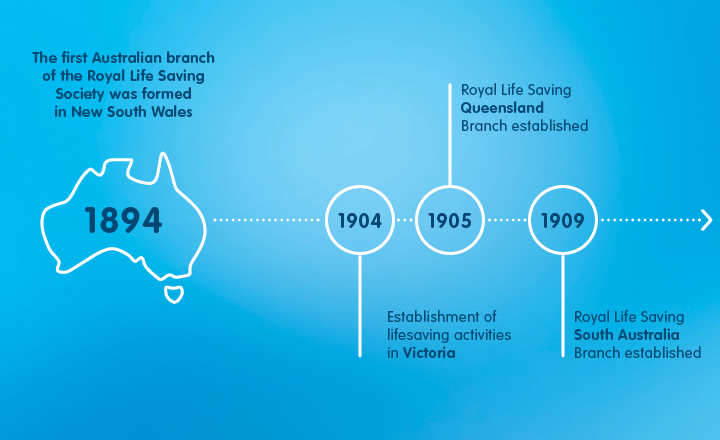
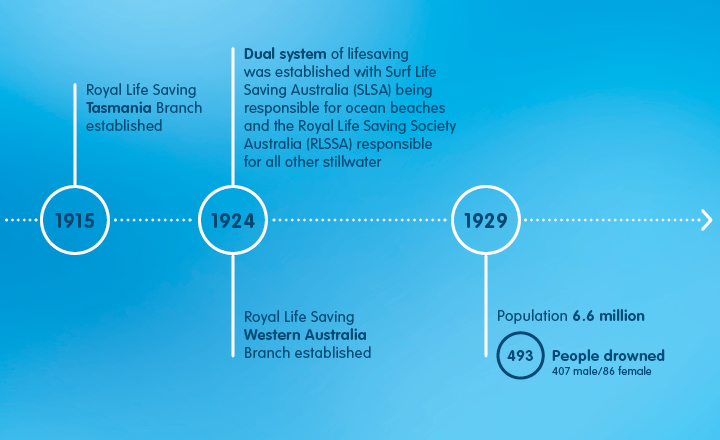
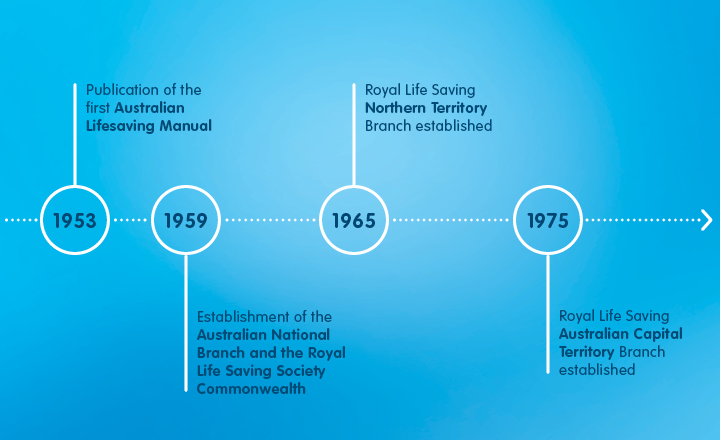
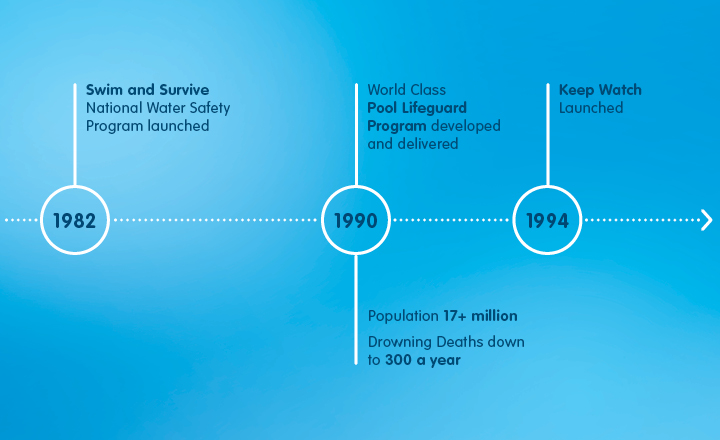
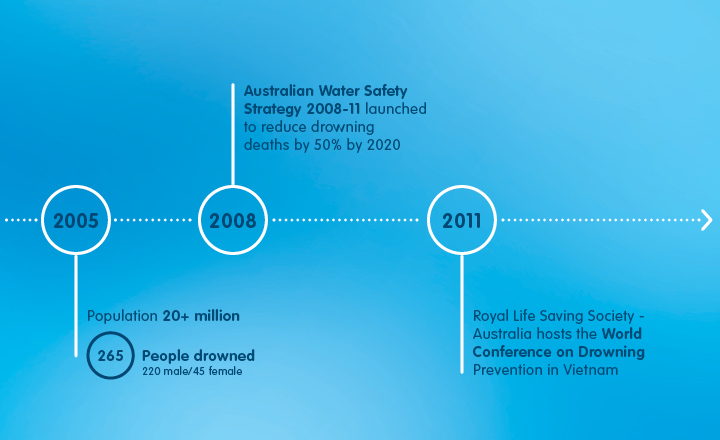
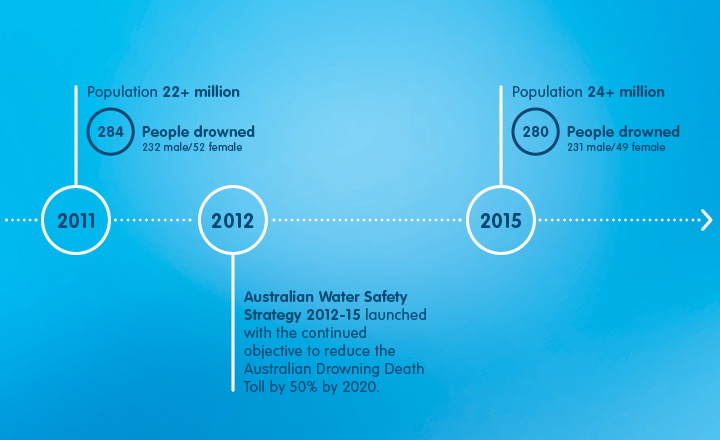
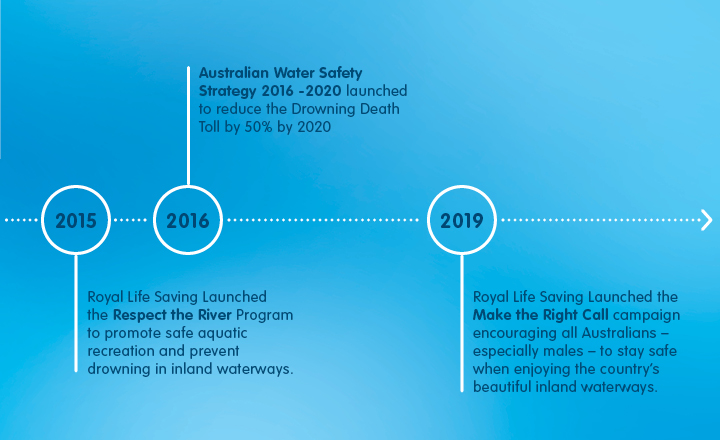
The Royal Life Saving Society (RLSS) was founded in England in 1891 to combat a high drowning toll. The techniques advocated by the Society were soon adopted by many countries and today the RLSS represents the largest single organisation dedicated to the teaching of lifesaving and the prevention of drowning.
The first Australian Branch was formed in New South Wales in 1894 and the movement soon spread to all States. In December 1924, a dual system of lifesaving was established with Surf Life Saving Australia being responsible for ocean beaches and the Royal Life Saving Society - Australia responsible for all other waterways and stillwater environments.
In subsequent years the Society focused its attention on water safety education and rescue training for inland areas, and particularly for school children. In the immediate pre and post Second World War era the Bronze Medallion was included in many secondary school physical education programs.
This period of change in Australia ultimately led to an important international change in 1959 with the establishment of the "Australian National Branch" and the RLSS Commonwealth Society. This time was followed by a period of relative stability, with the water safety and lifesaving programs being used in most Australian schools.
This program was so well structured and in demand from teachers, it resulted in over 1 million awards being taken in just 2 years. At the same time the organisation launched the first edition of "Swimming and Lifesaving - The Manual", a radical and modern looking educational text.
Over one million Australian's undertake a Royal Life Saving course or program every year. Over 5 million Australians have achieved their Bronze Medallion since its inception, and over 10 million have learnt their essential water safety skills through Swim and Survive.
